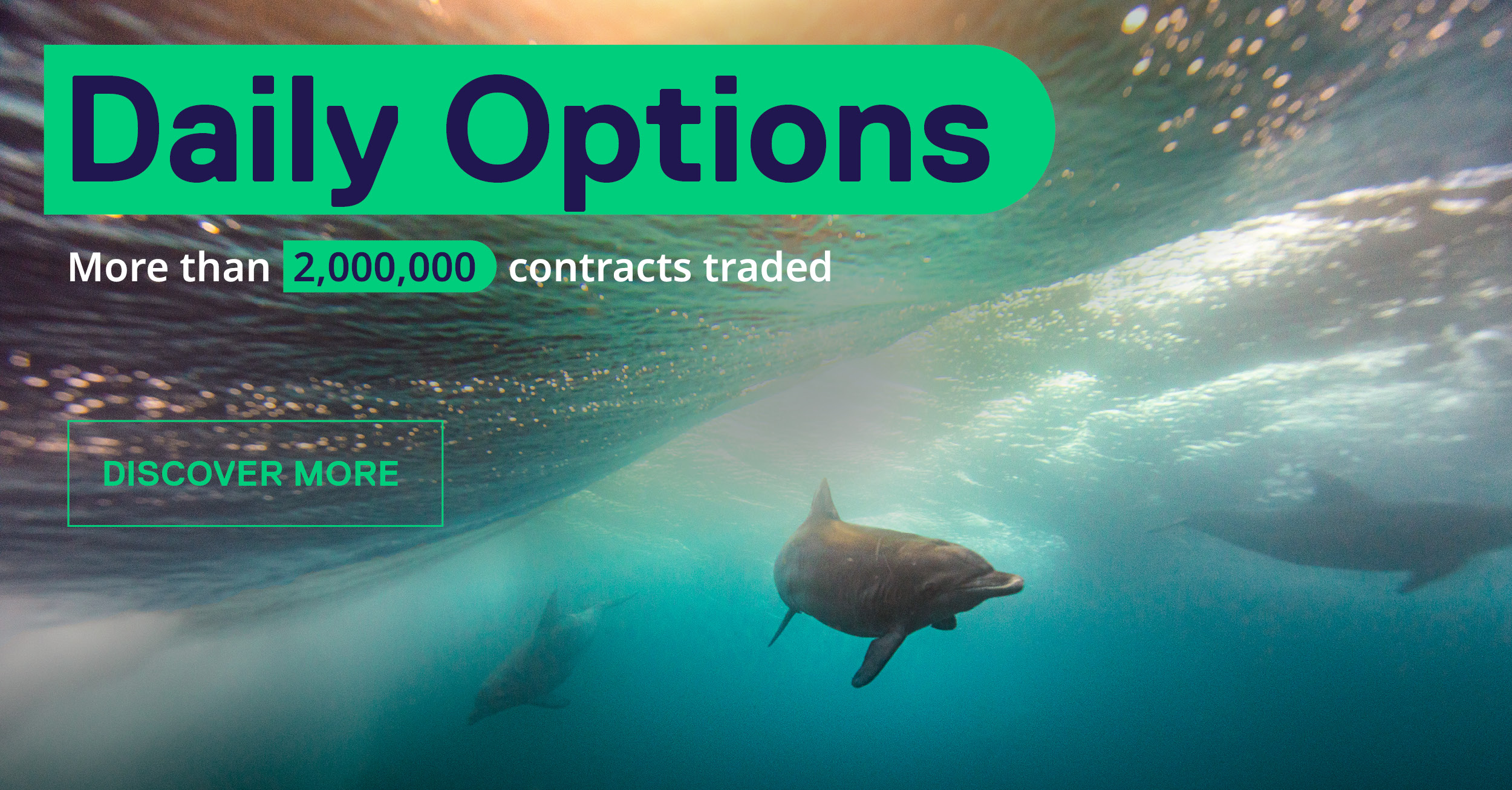Dear Eurex Participant,
With the planned migration of functionality away from Eurex Classic, changes to T7 and C7 will apply with the launch of T7 Release 8.0 and C7 Release 6.0 (both on 18 November 2019).
This Newsflash provides information regarding the following topics:
- Migration of Product Group Assignment to Capacities (C7)
- Decommissioning of MOQ CM defined in Eurex Classic
- Pre-Trade Risk Limits (T7)
- Simulation timeline (T7 and C7)
- Readiness Statement (T7)
Definitions
CM = Clearing Member
DCMP = Disclosed Client Market Participant
T7 TSL = T7 Trade Size Limits (as defined by a DCMP/CM solely for his their own traders)
MOQ CM defined = Maximum Order Quantity as set by a CM in Eurex Classic (as defined by both for the CM and their DCMPs)
MOQ Eurex defined = Maximum Order Quantity as set by Eurex (applicable if CM has not defined a MOQ for his DCMPs and himself, and/or if DCMP/CM for his their own traders did not define a TSL)
PTR = Pre-trade Risk limit functionality (a CM can define limits for themselves and their DCMPs. A DCMP can define limits for his own traders/groups)
1. Migration of Product Group Assignment to Capacities (C7)
The former product assignment groups will be replaced by “Capacities”. As in Eurex Classic, all products within a Capacity will be assigned by Eurex Clearing to the Clearing Members as well as to the DCMPs, provided the respective clearing and trading licence applies.
After this assignment the CMs and DCMPs will be allowed to trade and clear all products related to a capacity per default. No quantities for Capacity / Product level will be maintained in C7.
CMs have the possibility to change the setting of the products for themselves as well as for their DCMPs by de-assigning the products. De-assigning of products can be done via the C7 GUI. The CM can re-assign the products accordingly. These changes have an immediate effect on trading (for CMs and DCMPs) as well as clearing (DCMPs only). Clearing for DCMPs will be restricted for the following functions after the de-assignment of a product: Take-up; External/Internal Position transfer; Trade Account transfer.
Additional information can be found on www.eurexclearing.com in the following documents under the following link:
Technology > Eurex Clearing’s C7 > System documentation > Overview & Functionality
- C7 6.0 Release Notes – Update
- C7 6.0 Derivatives Clearing Functional Reference
- C7 - User Entitlement Guide
The C7 Clearing GUI – User Manual with additional information will be published mid-October 2019 and located under Technology > Eurex Clearing’s C7 > System documentation > C7 Clearing GUIs
2. Decommissioning of MOQ CM defined in Eurex Classic
With C7 Release 6.0, MOQ CM defined for the DC Market Participants (DCMP and CM himself) will cease to exist.
To further maintain limits for the DCMPs, CMs are advised to use the T7 PTR position functionality (see chapter 3).
3. Pre-Trade Risk Limits (T7)
The PTR position functionality was already introduced with T7 Release 7.0 in December 2018 and is currently available for the most important index and fixed income futures and 117 MSCI futures (in total 141 products, see attachment 1).
Eurex Exchange offers Pre-Trade Risk Position Limits in T7 to allow the CMs to effectively manage pre-trade risk for their DCMP. It is highly recommended that CMs use the Pre-trade Risk Position Limit functionality (PTR position functionality) maintainable via the T7 Clearer GUI to control trading activities of DCMP).
The PTR functionality is described on www.eurexchange.com under the following path:
Technology > T7 Trading architecture > System documentation > Release 8.0 > Overview & Functionality > Functional Reference
Please be aware that if no PTR position limits are set for the DCMP by the CM and by the DCMP for his own traders/groups, the following limits applies:
1. TSL set by the member for his own traders (if defined), else
2. MOQ set by Eurex.
CMs are currently able to provide long and short pre-trade risk position limits to limit/control the trading activities of their DCMP regarding on-book and off-book trading in our most important futures (up to 4 limits per future: long and short for on-book trading and long and short for off-book trading).
CMs are also able to specify the pre-trade risk position limits for their DCMPs in the T7 Clearer GUI, which is available separately from the T7 Trader GUI for each CM regardless of any trading licenses. Access to the T7 Clearer GUI is unchanged after the launch of T7 Release 8.0 and will be ensured independently from any T7 release.
A detailed description of the T7 Clearer GUI application and its functions can be found on www.eurexchange.com under the following path:
Technology > T7 Trading architecture > System documentation > Release 8.0 > Eurex GUI Solutions > T7 Derivatives Markets Trader, Admin and Clearer GUI Manual
For current PTR products in scope (see above) all long and short on- and off-book trading limits maintained by the CM will be taken over from T7 Release 7.0 to T7 Release 8.0 and, consequently, will remain in place.
For those products, where the PTR position functionality is currently not activated in the T7 trading platform, CMs/DCMPs will not be able to specify PTR position limits until the launch of T7 Release 8.0.
With this Release introduction, the PTR position functionality will be activated only for off-book trading for all remaining products.
In case a CM would like to impose off-book trading limits to his DCMPs, we recommend that CMs prepare a .csv file, specifying the corresponding PTR position limits for off-book trading for their DCMPs, prior to the launch of T7 Release 8.0 (corresponding sample files for on- and off-book limits are attached to this email). The csv file can then be uploaded with immedidate effect via the T7 Clearer GUI after the T7 trading platform is available on the launch date, Monday, 18 November 2019.
Please refer to attachment 2 and 3 for the on-book csv file and off-book csv file.
4. Simulation timeline
The timeline for the above-mentioned changes in simulation is as follows:
| 23 September 2019 | C7 6.0 Simulation | Clearing Members can define which related Trading Participant can trade which products (product assignments) |
| 11 October 2019 | T7 8.0 Simulation | All Trading Participant’s business units in T7 will automatically get all Product Assignment Groups (PAGs) assigned. |
| 16 October 2019 | T7 8.0 Simulation | T7 takes the product assignment information from C7. Transaction Size Limits (TSL) in T7 are set to zero if no product assignment by the Clearing Member in C7 exists. Otherwise, Eurex defined TSLs on a product level will be applied. |
| 11 November until 15 November 2019 | C7 6.0 Pre-Production | Prior to the production launch, Clearing Members can review/change Capacity-product assignment (de-assignment is also possible after production launch). The Capacity / product assignment will be set effective to the T7 trading platform on Monday, 18 November 2019, immediately after the launch of T7 Release 8.0. |
5. Readiness Statement (T7)
We would like to make you aware about the mandatory feedback that we kindly request from you. Please submit the "Readiness Statement" for the go-live of T7 Release 8.0 prior to launch. Please enter your dedicated Eurex PIN (the PIN is for security reasons) in the online questionnaire. The PIN for your company has been sent to the Central Coordinator.
We kindly ask all Trading Participants to return the Readiness Statement by Friday, 8 November 2019 latest. The Readiness Statement can be found here: Readiness Statement. All information about T7 Release 8.0 can be found on our Initiatives page.
We would also like to remind you to participate in the simulation environment and the connection test to assure a smooth transition.
If you have any further questions or comments, please do not hesitate to send an e-mail to client.services@eurexchange.com.
Attachments:
Attachment 1: List of products file
Attachment 2: On-book file
Attachment 3: Off-book file
Your Client Services Team
| Recipients: | All Trading Participants of Eurex Deutschland and Vendors |
| Target groups: | Front Office/Trading, IT/System Administration, Auditing/Security Coordination |
| Contact: | client.services@eurexchange.com |
| Web: | www.eurexchange.com > Initiatives |


